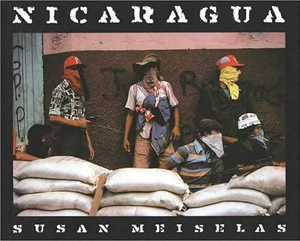
Erina Duganne, Assistant Professor of Art History at Texas State University, visited the Ransom Center on a Marlene Nathan Meyerson Photography Fellowship for a month during the summer of 2011 to review photographs by Susan Meiselas in the Magnum Photos collection. This research relates to her forthcoming book that examines the act of bearing witness in photography from the 1970s through the 1990s. She is also presenting her findings on Meiselas at the annual conference of the Association of American Studies. The Ransom Center is now accepting applications for 2012-2013 fellowships. Duganne discusses her research here.
For this fellowship, I closely examined press photographs in the Magnum Photos collection that Susan Meiselas took of the insurrection that occurred in Nicaragua in the late 1970s. My interest in these images was twofold. I sought to determine how these photographs were trafficked in print media, as well as how Meiselas responded to these uses through her 1981 book Nicaragua, June 1978–July 1979 and her 1982 exhibition Mediations.
To facilitate this research, I first organized Meiselas’s Nicaragua photographs according to the story index number that was, in most cases, found on the recto of the images. Next I located the actual newspapers and magazines that published these photographs so that I could compare which images from a particular story were in fact published and how they were captioned. I then compared how Meiselas used photographs from the same stories in her book Nicaragua and in her exhibition Mediations. Through these comparisons, I sought to determine the historically specific ways in which Meiselas’s Nicaragua photographs were distributed by Magnum Photos, used by the print media, and then recontextualized by Meiselas herself. In so doing, my aim is to suggest not only how Meiselas responded to this trafficking of her photographs, but more importantly, how she attempted to use these two projects to make viewers as well as herself implicit in the histories to which these photographs and their circulation bear witness.

